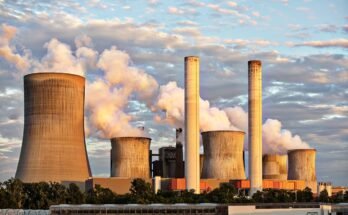The environment encompasses the natural world around us, including the air we breathe, the water we drink, the land we live on, and the diverse ecosystems that sustain life. It is the foundation upon which humanity’s well-being rests. However, over time, human activities have had a profound impact on the environment, leading to pressing challenges such as climate change, biodiversity loss, deforestation, pollution, and the depletion of natural resources. In this article, we will explore the importance of protecting the environment and the steps we can take toward a sustainable future.
The Importance of a Healthy Environment
A healthy environment is essential for the survival of all living organisms. It provides the necessary resources for food, clean water, and oxygen while also supporting the complex web of life through various ecosystems. Forests, oceans, wetlands, and other natural systems regulate climate, purify air and water, and provide habitats for countless species. These ecosystems are also critical for human well-being, offering recreational spaces, medicinal plants, and raw materials for various industries.
Beyond the biological aspect, the environment also influences social and economic stability. Communities rely on the environment for their livelihoods, whether through agriculture, fishing, tourism, or other industries. When the environment is harmed, it directly affects economies, food security, and public health, particularly in vulnerable populations.
The Growing Environmental Challenges
- Climate Change: One of the most significant environmental issues today is climate change, primarily caused by the burning of fossil fuels, deforestation, and industrial activities that release greenhouse gases (GHGs) into the atmosphere. These gases trap heat, leading to global warming, rising sea levels, and unpredictable weather patterns. These changes threaten ecosystems, food production, and the very habitability of certain regions.
- Pollution: Pollution, in all its forms—air, water, and soil—poses a serious threat to the environment. Air pollution from vehicle emissions, industrial processes, and power plants not only harms human health but also contributes to global warming. Water pollution, caused by agricultural runoff, industrial waste, and plastic waste, threatens aquatic life and the availability of clean drinking water for billions of people. Similarly, soil pollution degrades land quality, reducing agricultural productivity.
- Deforestation: Forests play a critical role in maintaining biodiversity, regulating the climate, and providing livelihoods to millions of people. However, deforestation driven by agricultural expansion, logging, and urbanization is one of the biggest environmental challenges of the 21st century. The loss of forests contributes to carbon emissions, disrupts local climates, and leads to the extinction of species.
- Loss of Biodiversity: The rapid loss of species due to habitat destruction, climate change, overexploitation, and pollution is a pressing issue. Biodiversity loss weakens ecosystems, making them less resilient to environmental changes and reducing their ability to provide essential services, such as pollination and water purification.
Steps Toward Environmental Protection
While the challenges are immense, there is hope. Governments, organizations, and individuals can take meaningful actions to protect the environment and secure a sustainable future.
- Sustainable Practices: One of the most important steps is adopting sustainable practices in daily life. This includes reducing waste, reusing materials, and recycling. Energy efficiency can be improved by using renewable sources like solar, wind, and hydropower. Reducing the consumption of single-use plastics, opting for public transportation, and supporting local and organic agriculture can further help in minimizing environmental impact.
- Conservation Efforts: Protecting natural habitats and conserving biodiversity is essential for a thriving environment. Initiatives such as creating protected areas, reforestation projects, and sustainable fisheries management can help preserve vital ecosystems and species. International agreements like the Convention on Biological Diversity (CBD) are critical in fostering global cooperation to protect the planet’s natural heritage.
- Education and Awareness: Raising awareness about environmental issues is key to inspiring collective action. Governments, educational institutions, and environmental organizations must prioritize environmental education to empower people to make informed decisions and adopt greener lifestyles. Understanding the connections between human actions and environmental health is critical for fostering a culture of responsibility.
- Policy and Legislation: Governments play a central role in combating environmental degradation. Through policies, regulations, and laws, they can reduce pollution, incentivize clean energy, and protect natural resources. International frameworks like the Paris Agreement on climate change are important steps toward global action on reducing emissions and mitigating climate change impacts.
- Innovation and Technology: Technological advancements can provide solutions to many environmental problems. Clean technologies in renewable energy, waste management, and sustainable agriculture are vital for creating a greener future. Advances in electric vehicles, carbon capture, and sustainable building materials also offer potential for reducing environmental harm.
The Role of Individuals in Environmental Protection
While collective action is essential, individual choices matter too. Each person can contribute to a healthier environment by making conscious decisions in daily life. Reducing consumption, conserving water, supporting sustainable businesses, and adopting eco-friendly habits can collectively make a significant difference. Small actions, such as planting trees, avoiding plastic products, and reducing energy consumption, can lead to larger positive changes when adopted by communities worldwide.
Conclusion
The environment is the cornerstone of human existence, and its protection is vital for our well-being and the health of future generations. While environmental challenges are significant, they are not insurmountable. Through a combination of sustainable practices, innovative technologies, policy changes, and global cooperation, we can work toward creating a sustainable and resilient environment. Every effort counts, and together, we can make a meaningful difference in safeguarding the planet for future generations.



